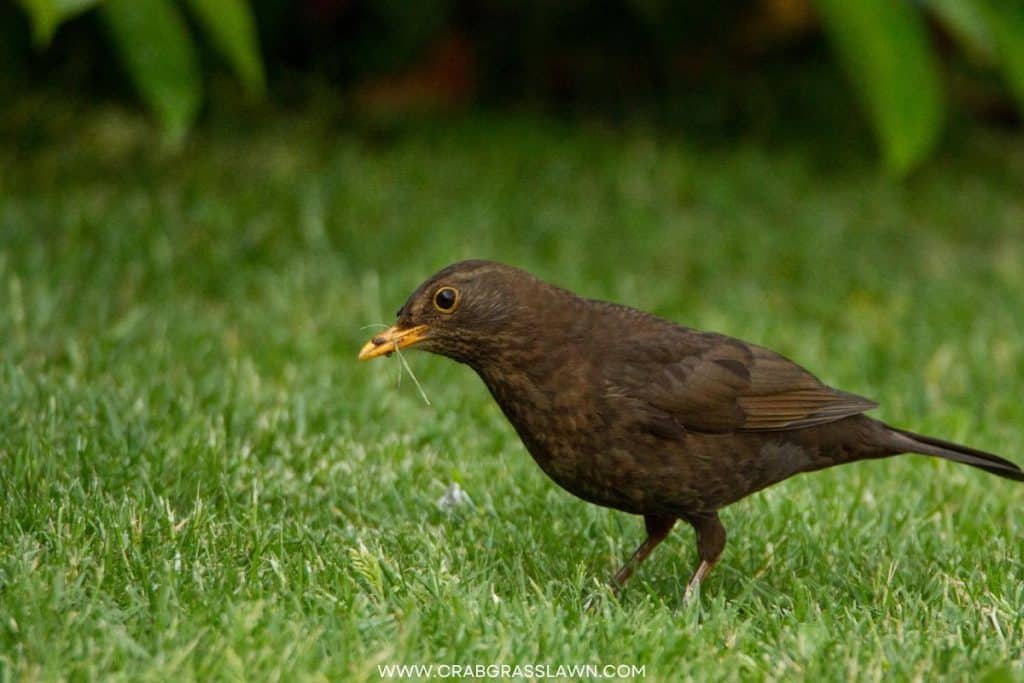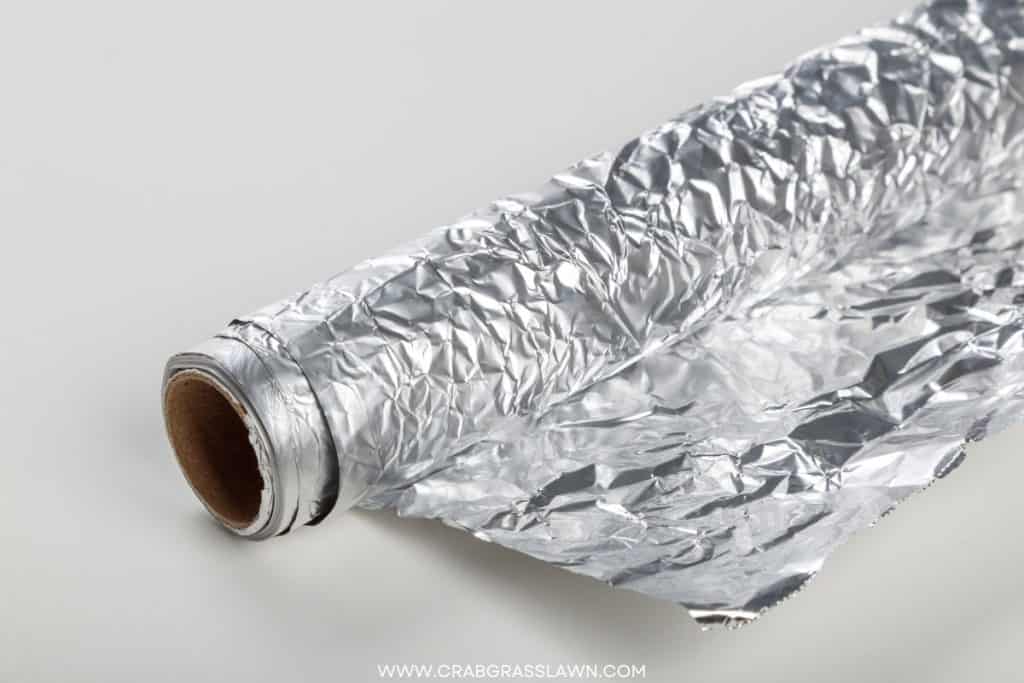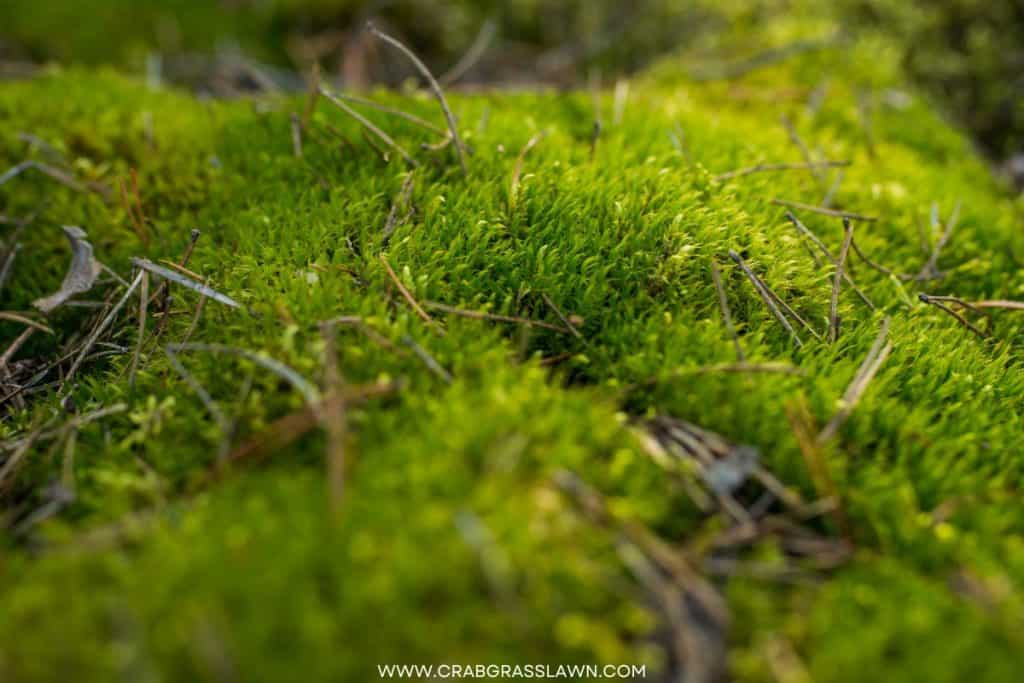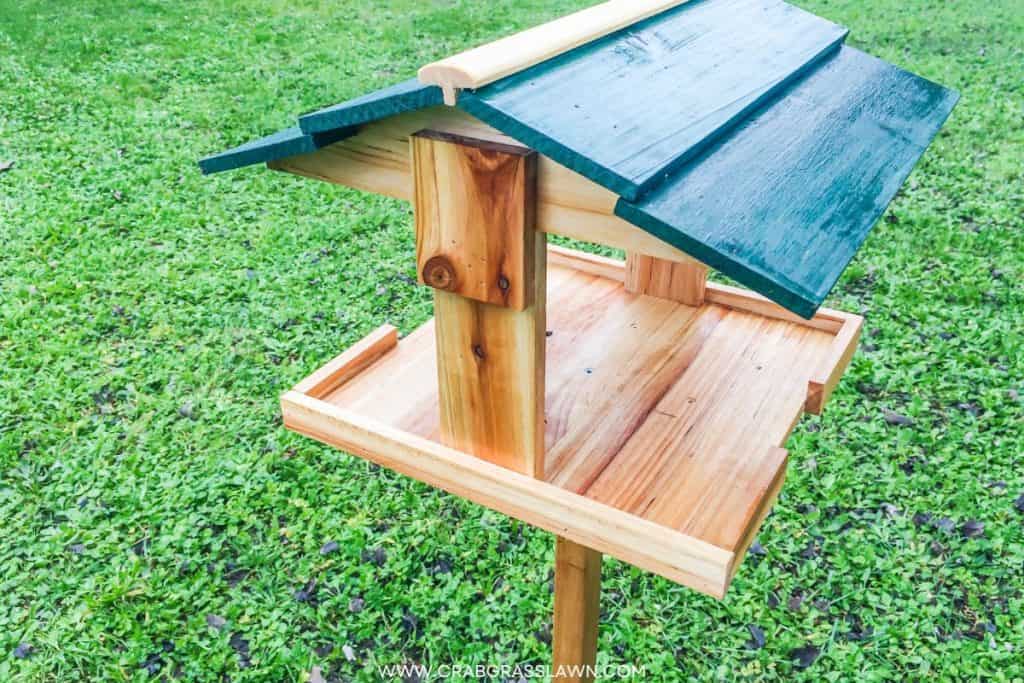Birds offer several advantages for your lawn and garden. But birds and grass seeds aren’t a good combination. Grass seeds are a favorite food for many species of birds such as sparrows and finches.
I’ve tried several different methods to prevent birds in my lawn but here are 15 effective ways to stop birds from munching on grass seeds.
The 5 most effective ways to keep birds from eating grass seeds are:
- Bird repellant seeds
- Cover the seeds
- Grass seed netting
- Tin foil
- Hang bird tape
Read further to find out which method is right for you and how to use them properly.
15 Effective Ways To Keep Birds From Eating Grass Seeds
There are myriad different ways of preventing birds from getting to their food source. But here are 15 effective ways to keep birds away from your grass seeds.

1. Bird Repellant Seeds
Bird-repellant grass seeds aka coated grass seeds are just that – seeds that are designed to repel birds and certain other pests. These seeds are coated with a repellant that makes them taste bad to birds. You can buy bird-repellant grass seeds at your local home and garden center or online. Read about the first scientifically proven seed treatment to stop birds.
2. Cover the Seeds
Covering the grass seeds with grass seed straw or mulch is perhaps the easiest way to keep birds from eating grass seed. There are several different types of covers available such as mulches, floating seed covers, and netting.
Mulch options include a layer of straw, straw mulch, and hay, both of which allow water and light to reach the grass seedlings to start the germination process.
After spreading grass seeds, and raking them into the soil surface, cover the seeds with mulch to a depth of 1/16 to 1/8 inches. You can rake the mulch away once the grass is growing well.

3. Grass Seed Netting
Just as the name suggests, grass seed netting is a specialized type of netting that is designed for growing and propagating grass seeds.
Grass seed netting can be made from several different materials including nylon, polypropylene, and even recycled plastic bottles.
Grass seed netting offers twofold benefits – protects your grass seed from birds and prevents them from being blown away by the wind in windy conditions.
The A.M. Leonard Curlex grass seed netting measures 4 feet x 112.5 feet, serves as a mulch, and adds nutrients to the soil during breakdown.
- Curlex Blanket is an easy to install erosion control blanket
- Super light weight for handling
- Blanket is fully bio-degradable
Affiliate links and images pulled from the Amazon Product Advertising API on: 2025-06-30
One side of this netting breaks down under sunlight within 90 – 120 days, which is the right amount of time for grass seed germination and growth.
4. Tin Foil
Birds despise the feel of tin foil under their beaks and will stay away if present. Simply cut strips of tin foil and place them next to the grass seeds, just barely beneath the soil.
Once the birds start to munch on the grass seeds, they will stop immediately once they feel the foil.

5. Hang Bird Tape to Protect Grass Seed
Bird tapes are available at online marketplaces and several local garden centers, and are crafted from flashy iridescent material. which is used to scare away pesky birds.
Birds are irritated by the movement and crinkling sound of the tape as well as its reflective colors and shimmering surface. Bird tape can be used in a variety of settings including in lawns, gardens, fences trees, and garden trellises.
For bird tape to be effective, it’s important to install it properly.
- Start by installing garden posts around the area where you’re sowing grass seeds.
- Install the bird tape in a way that it flutters in the breeze without touching the ground.
- For large open areas, long strips of bird tape can be fastened to the top of any tall tree or post.
The RESNSTAR bird tape ribbon features highly reflective properties and is built to last for many years to come. It refuses to rot when exposed to harsh outdoor elements and can be used for homes, gardens, patios, and fences.
- Durable Bird Flash Scare Ribbon for garden, yard, boat, Fruit trees, roofs, plant
- Easy to Use DIY: Cut strips of flash tape and tie anywhere you want, such as railings, rooftops and decks to deter birds
- High Quality Materials : Bird control reflective tape has highly reflective properties will last for many years. Will not be rotten because of exposure to the outdoors
Affiliate links and images pulled from the Amazon Product Advertising API on: 2025-06-30
6. Place Burlap Over Grass Seeds
Burlap is a hood covering material for newly seeded lawns. This material keeps your seeds in place and provides the seeds with the moisture they need to thrive.
Burlap is a little pricey compared to other materials but on a brighter note can be pulled, rinsed, and reused. Plus, unlike straw, you won’t have to deal with stray seeds or awful cleanup.
Burlap is made from natural fibers and features a loose weave, which lets air and water easily reach the seeds as they are germinating.
Your local garden center sells both natural and synthetic burlap sheets or burlap rolls, and you can tell the difference between the two by lighting a match to a strand of fiber.
The all-natural burlap will burn cleanly, while synthetic burlap will melt. Learn about the differences between natural and synthetic fibers to make the right choice.

7. Lay Garden Fleece Over the Seeds
Garden fleece or horticultural fleece is a plant blanket that’s easy to use for covering grass seeds as well as protecting them against harmful weather conditions.
Garden fleece is similar to plastic sheeting and is a synthetic material that’s made from polyester or polypropylene and feels more like a fabric than plastic.
Apart from protecting grass seeds from birds, garden fleece has plenty of other uses including keeping pests away from plants, and protecting plants from wind and hail.
The Agribon garden fleece can be ordered in several different sizes, and is extremely lightweight, allowing easy light and water transmission to the seeds. This non-woven garden fabric cover is resistant to exposure to the environment and best of all is reusable.
- Light weight frost blanket and provides up to 4° F frost protection & 85% Light Transmission
- Floating row cover provides frost and wind protection. Floating row cover traps heat and moisture to produce bigger, better and earlier crop yields
- Agribon is useful for various crops such as melon, tomato, green pepper, hot peppers, watermelon, pumpkin, strawberries and flowers, among others. It is also useful for the protection of tree fruits and berries.
Affiliate links and images pulled from the Amazon Product Advertising API on: 2025-06-30
8. Cover Grass Seed with Peat Moss
I’m going to give a special mention to peat moss because it does a great job of protecting grass seeds and much more. Peat moss is an excellent soil amendment that’s made up of decomposed organic material salvaged from peat bogs.
Peat moss works well as a cover for grass seeds and is also used by avid gardeners to manage soil pH. It boasts unmatched water retention abilities and is disease-resistant.
You can spread peat moss over grass seeds when establishing a new lawn and also when overseeding bare spots on an existing lawn.
Before covering the grass seeds with peat moss, it’s important to prepare the area by removing debris and applying herbicides to remove any existing weeds.
Next, spread the grass seeds using a seed spreader for even coverage, and then cover the grass seeds with peat moss at the rate of ¼ of an inch using your hands or a spreader.
Water the area lightly about twice a day until the grass seeds germinate. The grass seeds will germinate in a matter of weeks, after which you can lower the watering frequency to once per day.

9. Deter the Birds with Annoying Sounds
3 sounds can scare birds including high-frequency, and ultrasonic sounds. These noises get birds to scatter and not return, making this an effective strategy to keep birds away from your grass seeds and property.
The Bird-X BirdXPeller® Pro uses ultrasonic and sonic sounds to keep pests out. This low-profile, commercial-quality device is pet and children-safe and is easy to operate with its 5 custom settings.
No products found.
10. Setup Birds of Prey or Fake Predators
Birds of prey are predatory birds such as owls and hawks that prey on other birds and pests. You can easily find fake models at your local garden center.
Fake birds of prey can be used as a bird deterrent to reduce or eliminate bird activity in your lawn and garden. To make birds of prey more effective, you can add a sound bird repellent.
11. Install Bird Feeders
Birds are hungry and the grass seeds are their closest food source. Bird feeders not only feed birds but when set up properly keep them away from your grass seeds.
There are two things to consider when setting up a bird feeder – is the feeder in a safe location and can you see and reach the feeder?
Place the bird feeders at a height you can reach and at a reasonable distance from your newly planted grass seeds.

12. Hang CDs or Foil on a String
CDs and foil are reflective objects and birds are often misguided by shiny objects. The reflection of light from these objects discourages birds from returning to the areas where they’re placed.
13. Use a Decoy
Using a decoy is an excellent way to trick birds from eating your grass seeds. Plant extra seeds like sunflower seeds around the side of your lawn for the birds to eat instead of the planted or overseeded grass seeds.
14. Hang a Scarecrow to Stop Birds Eating Grass Seed
Scarecrows are a popular setup in the farming industry and are specifically designed to keep birds off crops and seeds. I know it’s an old-fashioned method, but a method that works.
You can make a scarecrow yourself by tying 2 sticks together and placing an old jumpsuit over it. You can also place a hat over the top for a more realistic look.
15. Install a Motion-Activated Sprinkler
Installing a motion-activated sprinkler provides two benefits to gardeners – water your grass seeds and keep birds away. Motion-activated sprinklers will spray water on your grass seeds as soon as it detects any motion or when birds enter the restricted area.
FAQs
Q. Why are Birds Eating My Grass Seeds?
A. Grass seeds are a preferred food for birds of all types. Even though many grass seed mixes feature a coating to speed germination and prevent birds from munching on them, hungry birds can overcome the deterrent and still feed on the seeds.
Q. Are There Any Grass Seeds that Birds Won’t Eat?
A. Unfortunately, there aren’t any seeds that birds won’t eat. Even though there may be plenty of other types of foods around such as berries and wild seeds, birds never pass up on grass seeds especially when they’re easily available under perfect conditions.
Q. Will Birds Eat Grass Seeds with Fertilizer?
A. Birds won’t necessarily eat the fertilizer but will pick the grass seeds from the fertilizer. However, birds may eat some fertilizer when eating the grass seeds without realizing it.
Q. How to Install Bird Netting Over Grass Seed?
A. Bird netting is an effective way to stop birds from eating bird seeds from the top layer of soil. When you sow grass seeds across the lawn and rake about an inch of soil over the grass seeds. Lastly, spread the netting evenly on top of the grass seeds.
Final Thoughts
Birds can be pests to newly sown grass seeds. But the good news is that there are 15 great ways of keeping birds away and preventing the seeds from blowing away in windy conditions. Wind chimes can also keep birds away owing to the unexpected and unusual noises they make.
Install a couple of wind chimes around the newly seeded area to see if these built-in noise deterrents are effective at keeping birds at bay. Most gardeners simply add straw mulch over the grass seeds as a preventative measure for birds attacking grass seeds.
Hi, Alex Kuritz here. Growing up I remember that my family had one of the best lawns in the neighborhood. Richly green and lush. I did a lot as I grew up in terms of caring and tending for not only my family’s lawn but also my neighbors. I can say I have years of experience, and I am here to share it with you.





